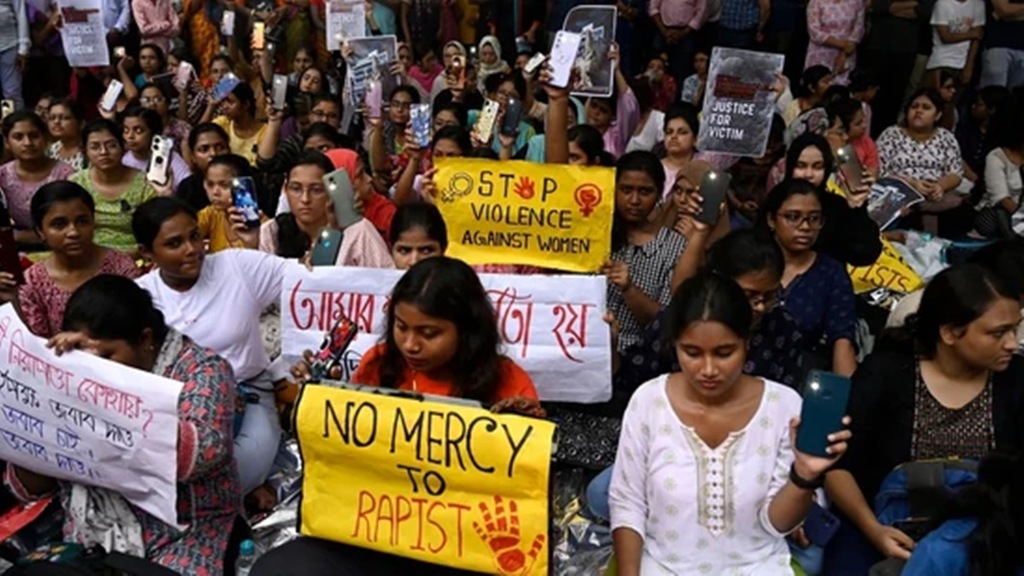Last month, Hindus around India celebrated Raksha Bandhan, a festival where sisters tie a “rakhi” or bracelet on their brothers wrists, who promise to protect them. Yet, where does the miscommunication lie for these men who pledge to protect their sisters but instead participate in the ever-increasing violations against women?
On Aug. 9, authorities found the body of a 31-year-old resident doctor battered with extensive injuries in a seminar hall at RG Kar Medical College and Hospital in Kolkata, India, where she was resting after a 36-hour exhausting shift.
The event, while not the first case of sexual violence to be widespread across India, caused an upheaval of protests by medical professionals and citizens around the country. Throughout the social media circles of India, female healthcare workers became the most vocal against the fact that an act of ultraviolence was committed within the walls of a hospital and their workplace. One protest, called Reclaim the Night March, advocated for increased security measures for women in the corporate sector and justice for the tragedy.
360,000 doctors participated in this nationwide strike to bring justice to the tragedy and to prompt the government to initiate new policies to ensure workspace safety for female professionals. Doctors refused services to non-emergency patients; however, the Supreme Court appealed for the doctors to return to work as their strike denied patients across India access to healthcare.
Although initially reporting the death as a suicide, authorities later determined that the physician was raped by a police volunteer who aided patients with hospital admission and had access to every part of the government facility, raising the questions: how do civilians have access to restricted quarters of the hospital? How did they know where to find her? Were they scouting the halls for a victim?
Westminster College counselor and South Asian Affinity group advisor Sumana Moudgal reflects on the hospital’s workplace safety.
“Female doctors don’t have a place to put their heads down after a 36-hour shift,” she said.
Government hospitals in India host poor working conditions with no designated bathrooms or places to sleep, leading female doctors to rest on benches or in dimly lit corridors.
Successful reforms are needed in the workplace where women increasingly take on professional roles. Engrained patriarchal attitudes perpetuate a lack of respect for women in the corporate sector, however, leading their expertise to be challenged. For instance, the hospital is currently a vulnerable space for female doctors, nurses, and healthcare workers— a white coat that reflects years of education and qualifications cannot serve as protection from sexual harassment.
The misogynistic culture and traditions embedded in Indian society form psychological and societal pressures that allow women to silently endure assault without standing up for themselves. Prevailing stigmas around sexual violence lead women to not report rape cases in fear of social repercussions or divorce and to protect the family honor.
Demonizing the victims of assault furthers this rape culture— the onus must be placed on the perpetrator, not the victim. Blaming the victim is partially the reason why only 20% of rape cases are reported, and thousands of cases go overlooked. It’s common for women in India not to report rape cases because they wonder, “What will come of it?”
Handling rape cases does not fall high on India’s government’s priority list, and the affluent middle and upper classes are more likely to get away with sexual assault.
“Police and members of the corrupt government who do handle these cases tend to be misogynistic and violent towards women, driving them away from feeling safe reporting rape cases,” says Moudgal.
The prevailing ideology of sex as a taboo topic prevents women from reporting cases of sexual assault. In a corrupt country such as India, the government lacks the funds to implement reform in the education system, and schools are devoid of proper resources to teach sex education and sexual wellness.
The status quo ideology of rape culture, perpetuated by a lack of acknowledgment in educational systems, puts people at risk not only in India but also in various countries, including the United States.
Schools should invest in education to “foster a consent culture over rape culture,” said Upper School teacher Jordan Dopp.
“We [should] openly talk about what consent is, what sex is, and various contraceptive means,” said Dopp. “We reinforce these from a young age so kids understand they have bodily autonomy, the right to say no, and the right to remove consent at any time”.
With over 1 billion people, India also meets a clear divide between urban and rural communities, making delivering information easier in metro cities where the population has more awareness and, therefore, traction for reform. The government does not have much appetite to institute educational reform, evidenced by when they rescinded promises from five years ago to change rape laws, but India’s extensive youth brings awareness and willingness to introduce sexual wellness education to villages— the only burden they have to face is the pushback from the country’s significant conservative population.
“This topic is much harder to approach in rural areas, but sexual assault occurs there, too. The concept of sex before marriage is scandalous in India— it is not the norm, but do people still do it? Yes,” says Moudgal.
Given the rising crisis of rape culture, society is responsible to hold perpetrators accountable and educate the population to become students of conscience.
Dopp says, “If we’re so prudish that we can’t talk about bodies this way, then we’re holding ourselves back.”



